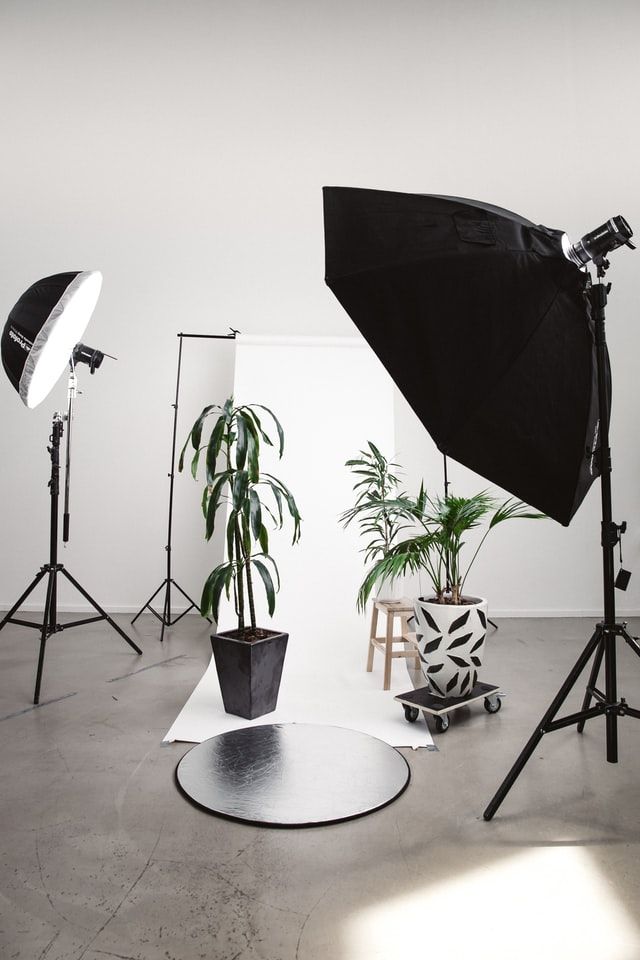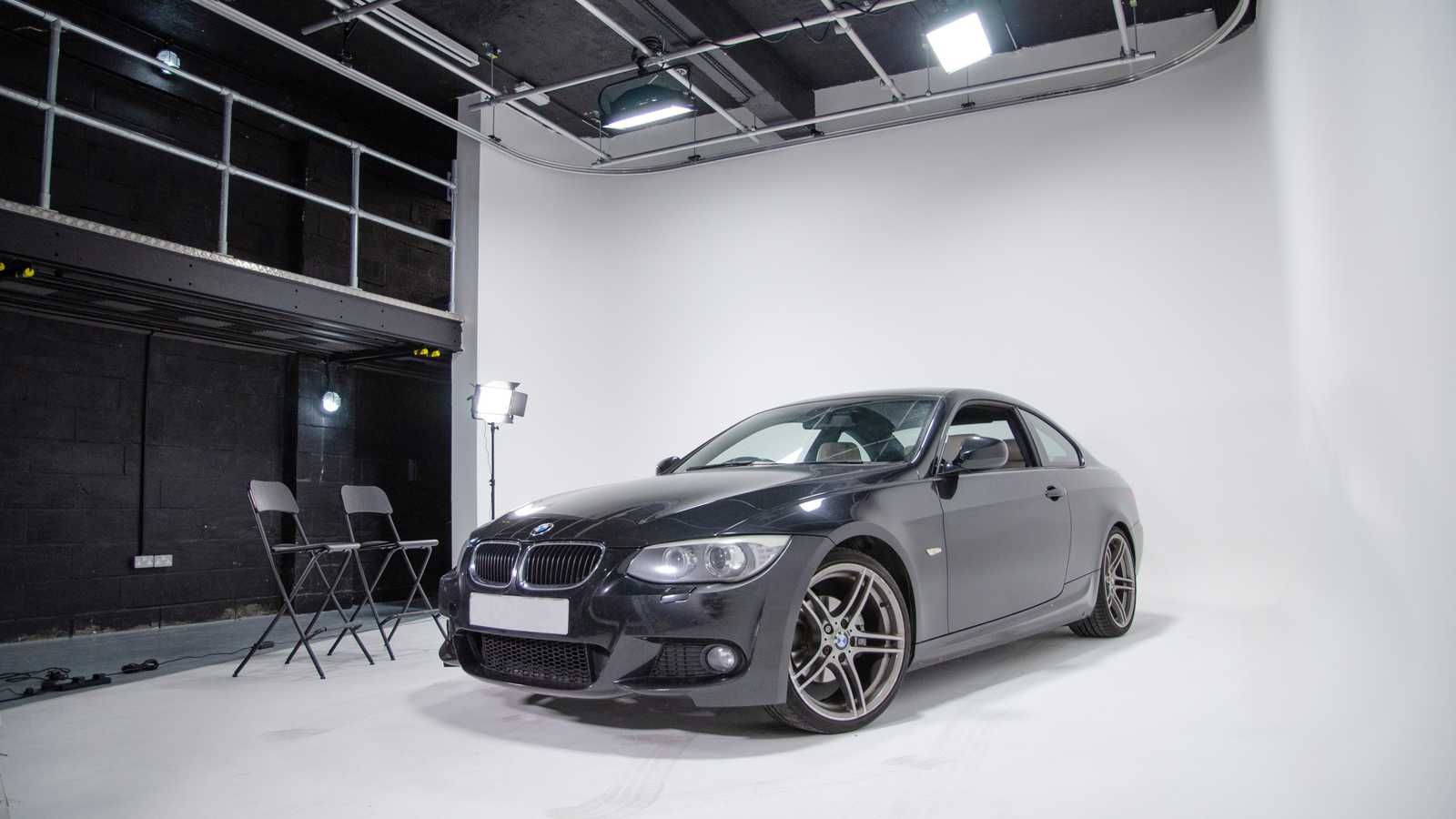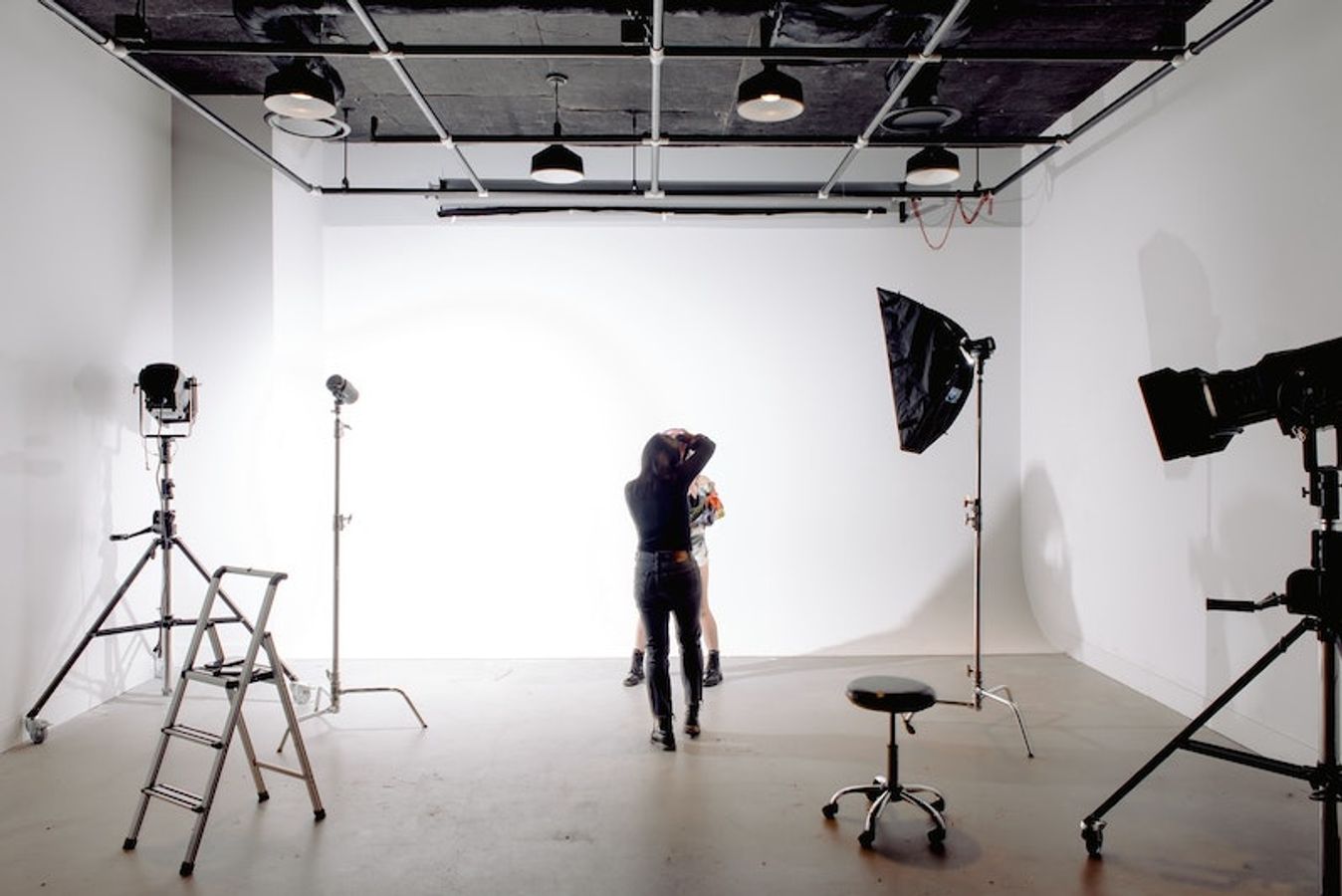As every seasoned photographer knows, an artist is only as good as his tools. Whether you’re an enthusiastic amateur or a long-time professional, building a photo studio to call your own is vital for creating your best work. So, where to start? The good news is that you can set up a functional studio almost anywhere. Whether you’re working with a pokey corner of your apartment or a large professional studio, you can start shooting gorgeous pictures once you’ve got the right equipment in place.
To assist you in making savvy purchasing decisions and creating a studio that suits your needs, we’ve collated a comprehensive photo studio equipment checklist below. We understand that money may be a little tight for some readers, particularly if you’re a bright young freelancer. As such, we’ve tried incorporating as many cost-effective hints and tips as possible.
Thinking of setting up a portable photo studio? Check out our top tips.
Who is this photo studio equipment guide for?
Anyone and everyone! As well as offering advice about photo studio equipment for beginners, this guide represents a rich resource for photographers more accustomed to photoshoot locations or natural light photography. Whether you’re interested in finding out about the latest lighting technologies or feel a little overwhelmed by the sheer amount of photography equipment available on the market, we encourage you to dip into our photo studio equipment list to find first-class information!
Contents:
- Choosing your studio space
- Selecting the camera that works for you
- Lighting setups
- Backdrops
- Tripods & other accessories
- Props
- Computer & editing
1. Choosing your studio space
As we’ve already mentioned, you can set up a photography studio almost anywhere. However, you should weigh up your options before making a commitment. While your spare bedroom may seem like the ideal (rent-free!) space to start shooting, you may want to think twice if you’ve got excitable children or pesky pets to contend with. Nothing is more frustrating than a cranky child bursting into your studio during a shoot! With this in mind, we’ve put together two potential location options to consider for your studio, including vital questions to ask yourself.
Option 1: Home photography studio

Following the COVID-19 pandemic, you may be fairly accustomed to working from home. Many people are shunning commuting and opting for the convenience of staying put - and we don’t blame them! Setting up shop at home can improve your productivity, enhance your work-life balance, and minimise those all-important expenses. However, there are a few factors you’ll need to consider before taking the plunge and building your very own home photography studio, including:
- Do you have enough space? — While it’s certainly possible to build a photography studio in a small room, you’ll need to consider what kind of photographs you’ll be taking. For example, you won’t get very far with a tiny studio space if you want to shoot a large family portrait. However, a small room will work wonders for small product photography or single-person shoots.
- Are there any studio spaces nearby? — People often work from home for convenience. However, there may be plenty of free studio spaces to rent nearby if you do a little research. Sometimes, separating your home life from your creative or professional pursuits will improve your mental health and work-life balance. Go with your gut!
- Are you a hobbyist or a professional photographer? — Renting or purchasing a professional studio may be preferable if you’re planning to build a strong business, particularly if you’re planning to branch out into new types of photography.
Option 2: Purchase or rent a studio space

Purchasing or renting a commercial space is a nifty idea if your home lacks space or you’re planning to work on complex photography projects. This option also allows you to earn extra income by renting out your studio. You may even wish to start running photography classes using your shiny new space. If you’re a little unsure about taking the plunge, we recommend you ask yourself the following questions:
- How varied are your projects? — If your projects are especially wide-ranging, a professional studio could work well. In a professional space, you’ll have plenty of room to add extra lighting, swap out backdrops, and invest in high-concept props. You may also find professional studios are better for videography projects. However if you're an event photographer who always works on-site for example, then it probably makes sense to rent out a studio by the day for when you need it.
- Do you have enough money? — Renting or purchasing studio space can be very pricey, especially if you’re based in a bustling city centre. If you’re just starting out as a photographer, it may be a good idea to set up shop at home for now.
- What are your future plans? — If you’re a hobbyist or new to the photography profession, it may be worth renting a fully-equipped photo studio for a short period before going all in and designing your own studio space. In so doing, you can avoid the financial burden of purchasing new equipment and assess whether you’ll be in it for the long haul.
2. Selecting a camera that works for you

It goes without saying that every decent photography studio requires a high-quality camera (or three!). Every year, camera manufacturers release a range of cutting-edge new models designed to produce even crisper, bolder, and more captivating shots than other cameras on the market. Fortunately, there are plenty of budget-friendly camera setups available if you’re willing to do your research. While the sheer number of cameras and lenses on offer may feel a little overwhelming, you can narrow down your search by asking yourself a few key questions, including:
- Do you require a full-frame camera? — If you’re a versatile photographer planning to use your camera outside the studio and in low lighting conditions, it’s worth investing in a full-frame camera. While they tend to be more expensive than other options, they offer unrivalled levels of detail, resolution, and dynamic range. However, if you’re only planning to use your camera in the studio, you may wish to opt for a more budget-friendly crop sensor camera such as an APS-C or a Micro Four Thirds model.
- What kind of photos will you be taking? — If you’re a portrait photographer, you’ll need a lens with a focal length of at least 23mm for an APS-C camera body or 85mm for a full-frame camera body. For headshots and close-up product photography, you’ll require around 50mm for an APS-C model or 85mm for a full-frame camera.
- How big is your studio? — If your studio is small, you’ll require lenses with a focal length ranging between 35mm and 85mm. With a larger space, you can use a focal length ranging anywhere from 70mm to 200mm.
- How many lenses can you afford to purchase? — Ideally, you should purchase a few lenses to suit different situations. However, if you lack the funds to splash out on a selection of lenses, you may wish to opt for an all-around lens such as an 18-105mm or an 18-135mm. While these lenses may not offer the ultra-crisp results of a prime lens, they’re great for amateurs and young professionals.
3. Lighting setups

If you’ve ever been the victim of a poorly lit portrait, you’ll know how fundamental a great photography lighting setup is for producing the perfect shot. Poorly arranged lighting will often result in deeply unflattering portraits and amateurish object photography — not ideal if you’re trying to make your name as a freelancer! Rookie photographers often get confused about lighting due to the sheer array of options available. To help you make the most of this photo studio equipment list, therefore, we’ve put together a checklist of must-have lighting basics:
Continuous lights

As the name suggests, continuous lights produce a constant stream of light (until they’re switched off!). Unlike flashlights, continuous lights will give you a strong idea of how your photographs will look. For example, if you’re unhappy with the way in which the light skims your subject’s face or creates unsightly shadows in the background of your image, you can simply adjust the position or brightness of the bulb. In this way, continuous lights are an absolute must-have for beginners and professionals, helping photographers carefully create stunning scenes.
Most commercially available continuous lights come in the form of LEDs that you can adjust to create cool or warm tones. LEDs are super durable, energy-efficient, and reliable, meaning you won’t have to shell out heaps of cash on your energy bills. Selecting other forms of continuous lighting (such as fluorescent or halogen lighting) could quickly become very expensive, especially if you leave your equipment switched on for long periods.
Strobe lighting and flashlights

Strobe lights (or flashlights) emit powerful bursts of light in a matter of milliseconds. If you’ve ever seen the paparazzi taking pictures of celebrities on the red carpet, you’ll know just how bright they can be! While most DSLR cameras come with in-built flashes, an external strobe will provide more power and allow you to adjust the amount of light emitted. As well as consuming much less energy than continuous lights, strobe lights are great for long-distance shots, high key lighting photography and providing plenty of power to ensure you capture your subject in as much detail as possible. Strobe lighting also provides slightly different effects to continuous lighting, allowing you to play around with different lighting setups.
Adjustable lighting kits
Adjustable lighting kits are intuitive packages designed to contain everything you need to light up your studio in a way that suits your needs. If you’re keen to minimise the time you spend searching for various bits of lighting gear, such a kit could be a lifesaver. Most adjustable lighting kits contain a softbox, reflectors, a boom arm, an adjustable light stand, and dimmable light heads. When used in tandem, these various technologies will help you create the perfect lighting arrangement in a matter of minutes — fabulous news if you’re short on time (and patience!).
Umbrellas

Umbrellas allow photographers to create soft forms of lighting that work well for interviews, music videos, and documentaries. There are two main types of umbrellas from which to choose — shoot-through umbrellas and reflective umbrellas. While the former produces a broad and bright kind of light, the latter offers something softer and easier to control.
Reflectors and diffusers

As you’ve probably guessed, reflectors help to create a bounced light effect, while diffusers help redirect light and spread it more evenly across a subject. While these handy bits of equipment aren’t strictly essential, they allow photographers to play around with different types of light textures and could help you create a winning shot. If money’s tight, why not consider adding these items to your wish list?
Colour gels

Looking to experiment with different coloured lighting? Colour gels offer a fantastically simple solution. Just strap the gels onto your existing lighting fixtures to instantly alter the look and feel of your shot. Colour gels come in many sizes and tones, and there are plenty of affordable options on the market. Although we recommend you place these add-ons low down your photo studio equipment checklist, they’re fun tools for professional and committed hobbyists.
4. Backdrops

If you’re starting to worry about the cumulative costs of this photography equipment, fear not! High-quality backdrops tend to be relatively cheap and will last for several years if you store them safely. It’s a good idea to purchase a plain white background as a starting point, as these represent the backbone of much commercial and portrait photography. However, it’s also worth building a collection to boost your versatility as a photographer and improve your creative output. Typically, you will find three types of backdrop on the market:
Plain backdrops: These backdrops come in a variety of colours and ensure all attention remains on your subject. Most backdrops are made using vinyl, velvet, canvas, muslin, seamless paper, velour, or cloth, each of which produces slightly different results.
Green screen backdrops: Green screen studios & backdrops are great if you’re hoping to heavily edit your photographs or videos.
Abstract backdrops: Some clients ask photographers to use abstract backdrops for their family or commercial photoshoots, helping to add a touch of texture to the finished image.

Other accessories you’ll need to support your backdrops include:
A backdrop stand: While you may be tempted to pin your backdrop to a wall, this could cause it to wrinkle and warp, producing shoddy-looking shots. A stand will ensure your backdrop looks seamless and stays put during shoots.
Backdrop clamps: These widely available accessories will securely hold your backdrop to its stand.
Hire photo studios with backdrops on Tutti
Choose from 1000+ spaces and locations and deal directly with space hosts for a quick, hassle-free booking process.

5. Tripods and other accessories

Tripods are simple accessories that are all built the same, right? Wrong! While you may be tempted to purchase the cheapest tripod on the market, there are several factors to consider before you throw your money at a shiny new model. These include:
How tall does it need to be? — Try to find a tripod that matches your height so that you don’t have to ruin your back by constantly bending over.
Can it support the weight of your camera? — As a general rule, tripods should be able to support at least 1.5 times the weight of your camera and bulkiest lens.
Will you be taking your tripod out and about? — If you’re only planning to use your tripod in your studio, you can settle for one with rubber or plastic feet. However, outdoor photographers or photographers that shoot on location may wish to invest in tripods with metal grips or spikes.

How secure is the tripod head? — Tripods come with one of three different types of heads, including pant-tilt, ball-head, and gimbal heads. Some photographers have a specific preference based on past experiences and find some systems fiddlier than others. If you’re unsure which to select, it’s worth testing a few models before making a purchase.
Does it come with any accessories? — Some tripods come with a range of handy accessories, including attachable strobe lights, carry cases, and umbrellas. These items could prove handy depending on your habits and preferences.
6. Props

Obviously, the types of props you invest in for your studio (if any) will need to align with your unique skills and selling points. For example, if you’re a dab hand at photographing babies, it will be useful to have a few cosy knitted blankets available to add colour and texture to your images. It may also be appropriate to have a stylish chair on-hand for photographing elderly clients or those with mobility issues.
7. A decent computer and editing software

Most laptops and desktop computers in today’s tech market are equipped with excellent processors and graphics. As such, you won’t need to look far to find a computer capable of handling any editing job. However, if you’re looking for optimum performance, we recommend investing in a machine with an i7 processor or above.
In terms of software, you won’t get much better than the Adobe Creative Cloud Suite. While it may be a little pricier than its lesser-known competitors, it allows you to complete almost any editing job with unrivalled precision. Plus, most photographers are trained to use Adobe, as it’s the gold-standard programme for editors and graphic designers. As such, you probably won’t need to learn any new skills or tricks. Your time is precious, after all!
The bottom line: Do your research!
As you can see from our relatively extensive photo studio equipment guide, there are plenty of factors to consider before kitting out your new photography space. Don't forget to consider any forms or documentation that you may need as well, for example if you're photographing models, you'll need to draft up a photography model release form.
While it’s easy to get overexcited about purchasing nifty new gadgets, you must (we repeat: MUST) do your research before making any potentially regrettable purchases. Remember to think about how you will be using your studio to create all those great photo shoot ideas you come up with, and don’t be afraid to shop around for the best deals. Some of the most affordable items are also the most effective, so it’s worth taking your time to scour the market. Good luck, and enjoy the process!
Hire dry and wet photo studios on Tutti
Choose from 1000+ spaces and locations and deal directly with space hosts for a quick, hassle-free booking process.
















